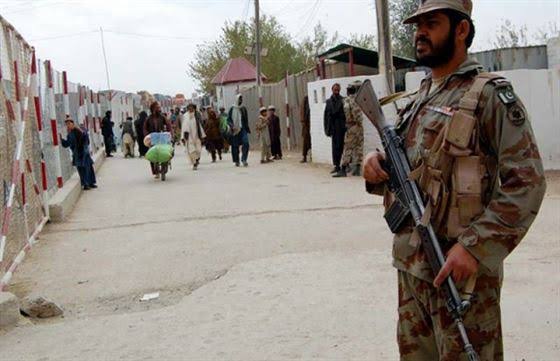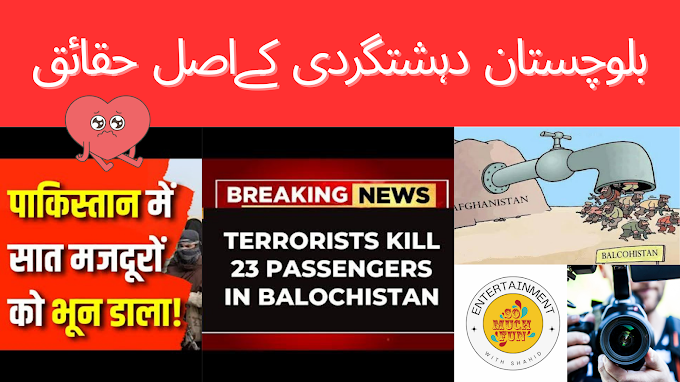Balochistan, Pakistan's largest province, is a land of stark contrasts and deep complexities. With its vast deserts, rugged mountains, and rich natural resources, Balochistan is a region of immense strategic importance. Yet, for decades, it has also been a battleground for insurgency and terrorism, making it one of the most volatile areas in South Asia. The narrative of terrorism in Balochistan is not just about violence; it's about a web of historical grievances, political marginalization, and socio-economic challenges that continue to fuel unrest. This blog aims to delve deep into the roots of terrorism in Balochistan, the actors involved, and the impact on the region and beyond.
Historical Context: The Seeds of Unrest
To understand the current state of terrorism in Balochistan, it's essential to look back at its history. Balochistan was a princely state during the British colonial era, and its accession to Pakistan in 1947 was fraught with controversy. Many Baloch nationalists claim that their leaders were coerced into joining Pakistan, a sentiment that has fueled calls for greater autonomy or independence ever since.
The first significant uprising occurred in 1948, just a year after Pakistan's independence, when Baloch leaders rebelled against what they saw as forced annexation. Over the decades, several more insurgencies erupted, each fueled by grievances over political exclusion, economic exploitation, and cultural suppression. The Pakistani government’s heavy-handed military responses often exacerbated the situation, fostering a sense of alienation among the Baloch people.
The Emergence of Terrorism in Balochistan
While insurgency and armed rebellion have long been part of Balochistan’s history, the province saw a significant shift towards organized terrorism in the early 2000s. Several factors contributed to this transformation:
Geopolitical Tensions: The region’s proximity to Iran and Afghanistan has made it a hotspot for regional rivalries. The influx of Afghan refugees and militants following the U.S. invasion of Afghanistan in 2001 brought new dynamics to Balochistan, with various militant groups using the area as a base of operations.
Sectarian Strife: Balochistan has a diverse population, including Sunni Muslims, Shia Muslims (mainly Hazara), Hindus, and others. Sectarian violence, particularly against the Hazara community, has been a significant aspect of terrorism in Balochistan. Groups like Lashkar-e-Jhangvi have targeted Hazaras in a series of deadly attacks, creating an atmosphere of fear and instability.
External Influences: Various intelligence agencies and foreign actors have allegedly fueled the insurgency and terrorism in Balochistan. Pakistan has frequently accused India of supporting Baloch separatists through funding and training, a claim India denies. Similarly, there are accusations that Iran has supported Shia militant groups in the province to counter Sunni extremism.
Local Grievances and Radicalization: Decades of political marginalization, economic neglect, and human rights abuses have radicalized many young Baloch. The promise of financial gain and revenge against the state has driven some into the arms of militant groups, who portray themselves as defenders of Baloch rights.
Key Actors and Groups Involved
The landscape of terrorism in Balochistan is populated by a variety of actors, each with its own agenda and modus operandi:
Baloch Separatist Groups: The Balochistan Liberation Army (BLA), Balochistan Liberation Front (BLF), and Baloch Republican Army (BRA) are some of the most prominent separatist groups. These groups claim to fight for Baloch rights and independence from Pakistan, targeting security forces, government officials, and infrastructure projects.
Islamist Extremist Groups: Besides Baloch nationalist groups, Islamist militant groups like Tehrik-i-Taliban Pakistan (TTP), Lashkar-e-Jhangvi, and Islamic State (ISIS) have a presence in Balochistan. These groups primarily focus on sectarian attacks, particularly against the Hazara Shia community, as well as assaults on law enforcement and military installations.
Criminal Syndicates: Balochistan’s porous borders and remote terrain have also made it a hub for criminal activities, including drug trafficking, smuggling, and kidnapping for ransom. These criminal elements often intersect with militant groups, creating a complex web of terrorism and crime.
Impact on the Region and Beyond
The impact of terrorism in Balochistan extends far beyond the province’s borders. The persistent violence has severe socio-economic repercussions, affecting the lives of millions and hindering development:
Humanitarian Crisis: The ongoing violence has created a significant humanitarian crisis in Balochistan. Thousands have been killed or displaced due to the conflict. The targeted killings, bombings, and kidnappings have instilled a climate of fear, causing many to flee their homes in search of safety.
Economic Development: Balochistan’s vast natural resources, including gas, minerals, and fisheries, remain largely untapped due to the persistent instability. Terrorist attacks on infrastructure, such as gas pipelines, have further hampered economic development. The China-Pakistan Economic Corridor (CPEC), a multi-billion dollar project aimed at developing infrastructure in Pakistan, has also faced numerous challenges due to security concerns in Balochistan.
Regional Stability: Balochistan’s instability has implications for regional security, particularly for Pakistan’s relations with neighboring countries like Iran and Afghanistan. Cross-border militant activities and the movement of refugees have strained relations and contributed to regional tensions.
Military and Security Costs: The Pakistani government has invested heavily in security operations to combat terrorism in Balochistan, deploying thousands of troops and paramilitary forces to the region. These operations have been costly, both in terms of financial resources and human lives, with frequent clashes between militants and security forces.
Efforts to Counter Terrorism and Bring Stability
In recent years, the Pakistani government has launched several initiatives aimed at countering terrorism and bringing stability to Balochistan:
Military Operations: The Pakistani military has conducted numerous operations to root out militant hideouts and dismantle terrorist networks in Balochistan. While these operations have achieved some success in disrupting militant activities, they have also been criticized for human rights abuses and heavy-handed tactics.
Political Reconciliation: In an attempt to address some of the underlying grievances fueling the insurgency, the Pakistani government has offered amnesty to Baloch militants willing to lay down their arms. Various political leaders have also called for greater autonomy for Balochistan and more significant investment in the province’s development.
Economic Development Projects: The government has launched several development projects aimed at improving infrastructure, education, and healthcare in Balochistan. The CPEC initiative, in particular, is seen as a potential game-changer for the region, promising significant investment and economic opportunities. However, ensuring local participation and addressing security concerns remain significant challenges.
Dialogue and Negotiations: There have been periodic efforts to initiate dialogue between the government and Baloch nationalist groups. However, mistrust on both sides and the involvement of multiple actors with differing agendas have made meaningful negotiations difficult.
The Way Forward: A Path to Peace and Prosperity
The path to peace and prosperity in Balochistan is fraught with challenges, but it is not insurmountable. A multifaceted approach is needed to address the root causes of terrorism and insurgency in the region:
Inclusive Development: Economic development projects must prioritize the needs and aspirations of the local population. Ensuring that Balochistan’s people benefit from the province’s natural resources and development initiatives is crucial for building trust and fostering long-term stability.
Political Representation: Greater political representation and autonomy for Balochistan can help address longstanding grievances. Meaningful participation of Baloch leaders in national decision-making processes is essential for fostering a sense of ownership and inclusion.
Human Rights and Justice: Addressing human rights abuses and ensuring accountability for past injustices are vital for building trust between the state and the people of Balochistan. A transparent and fair approach to justice can help heal wounds and pave the way for reconciliation.
Regional Cooperation: Enhanced cooperation with neighboring countries, particularly Iran and Afghanistan, is essential for addressing cross-border terrorism and ensuring regional stability. Diplomatic efforts to foster mutual understanding and collaboration on security and development issues can contribute to peace in Balochistan.
Dialogue and Engagement: Continuous dialogue with all stakeholders, including Baloch nationalist groups, civil society, and the international community, is essential for finding a peaceful resolution to the conflict. Building bridges through dialogue can help identify common ground and foster a shared vision for Balochistan’s future.
Conclusion:
A Hopeful Future for Balochistan
While the challenges facing Balochistan are significant, there is hope for a brighter future. By addressing the root causes of terrorism and insurgency through inclusive development, political representation, and respect for human rights, Balochistan can move towards a path of peace and prosperity. The stories of resilience and courage of the Baloch people serve as a reminder of their unwavering spirit and desire for a better tomorrow. It is up to all stakeholders to work together to ensure that Balochistan’s potential is realized, not through violence and terrorism, but through unity, development, and peace.



.jpeg)
.jpeg)








